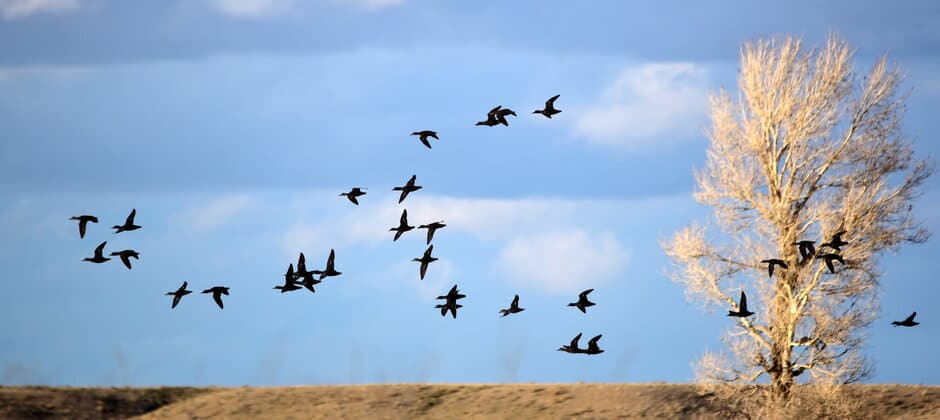Share this article
USFWS releases final environmental review on MBTA rule
The U.S. Fish and Wildlife Service has released the final environmental impact statement assessing its proposed rule that reduces migratory bird protections, which concludes that the new rule will result in increased mortality of migratory birds.
The Service also states that under the new rule — which limits the reach of the Migratory Bird Treaty Act to exclude incidental take — bird mortality will increase over time as more entities cease use of best practices to prevent incidental take. The Wildlife Society has opposed the proposed rule and argued that the Service’s initial analysis on the effects of the rule on birds was inadequate.
The Migratory Bird Treaty Act of 1918 protects over 1,000 migratory bird species across the United States by making it illegal to take — harm or kill — those species without a permit. The USFWS’ proposed rule, released in February, would codify in regulation the administration’s new interpretation that the law only applies to the intentional take of birds. The MBTA has traditionally been interpreted as prohibiting both the intentional take of migratory birds and their unintentional — or incidental — take.
Under the proposed rule, activities that unintentionally harm or kill migratory birds would no longer violate the MBTA.
The Wildlife Society submitted comments on this proposal in March, urging the agency to abandon the proposal and return to the traditional interpretation of the act. In July, The Wildlife Society submitted comments on the draft environmental impact statement, finding that the analysis contained therein was inadequate and recommending that the agency rescind the proposed rule altogether. In total, the agency received nearly 6,000 distinct comments on the draft as well as close to 180,000 signers on petitions and form letters.
In its letter regarding the draft, TWS noted that, “[t]hese analyses, in general, are perfunctory and not scientifically robust…[o]f particular concern to The Wildlife Society is the absence of sufficient analysis regarding the effect on migratory birds, the very species that the Migratory Bird Treaty Act is supposed to protect.”
The environmental impact statement analyzed the possible effects of three different alternatives on migratory birds, other environmental resources, ecosystem services and the economy. The final EIS is substantively similar to the draft published earlier this year and does not contain any additional analysis about the effect of the rule change on migratory birds.
In August, a federal court struck down the Interior memo that the rule is based on. The Trump administration announced its intention to appeal that decision in late October. Now that the final EIS has been released, the USFWS will likely release a final rule before the end of the administration, although it will probably be challenged in court. There has also been recent legislation, supported by The Wildlife Society, which would reaffirm the MBTA’s prohibition on incidental take. More information on the USFWS’s rulemaking process can be found here.
Header Image: The U.S. Fish and Wildlife Service has released the final environmental impact statement for the proposed rule to limit the reach of the Migratory Bird Treaty Act. Credit: USFWS Mountain & Prairie








